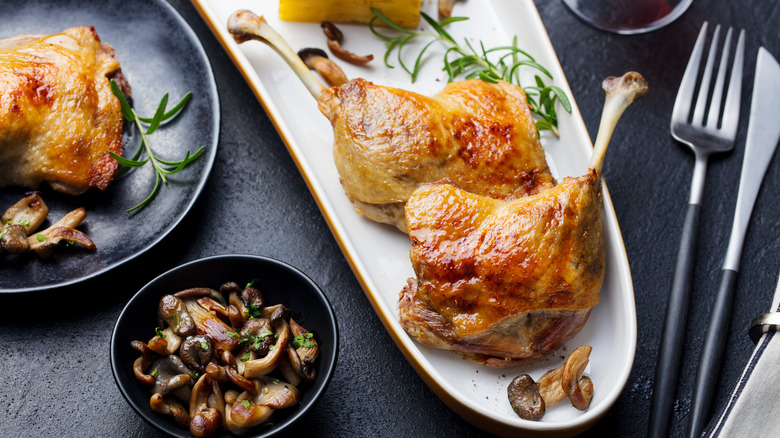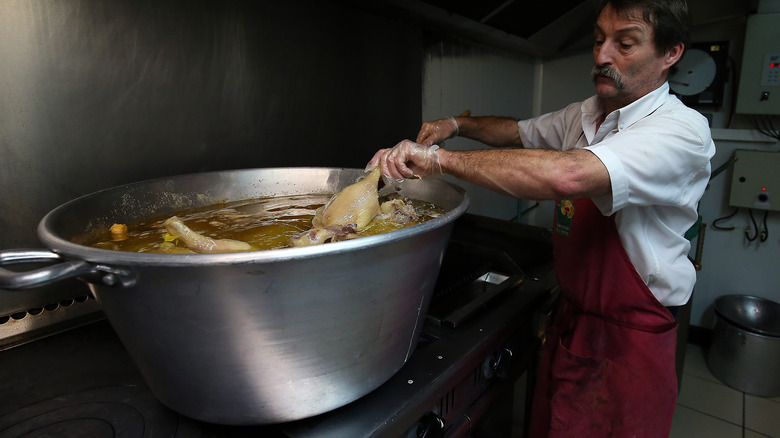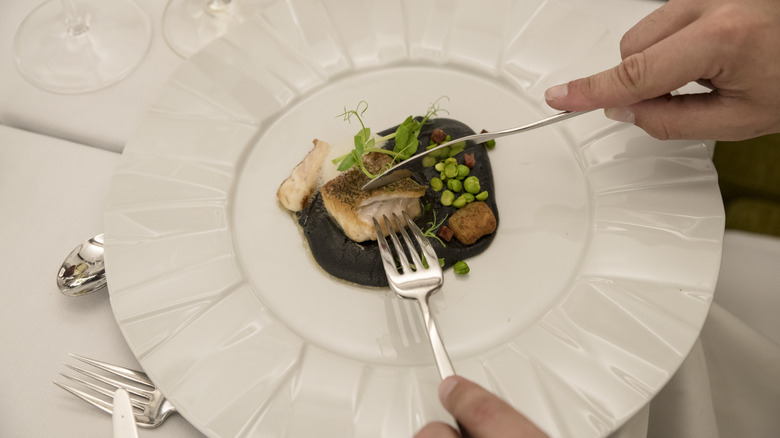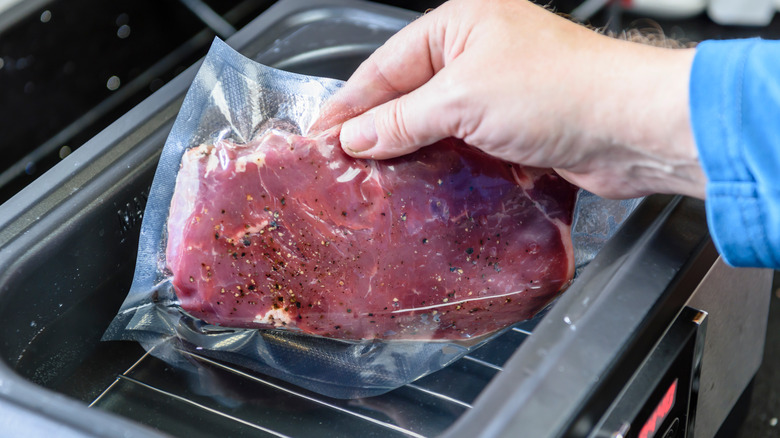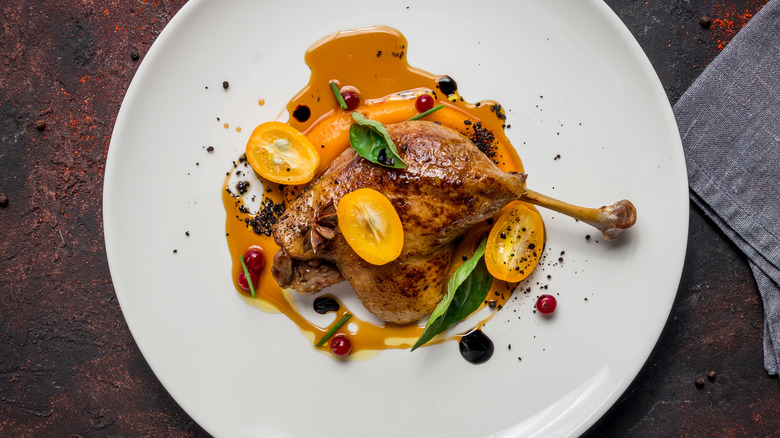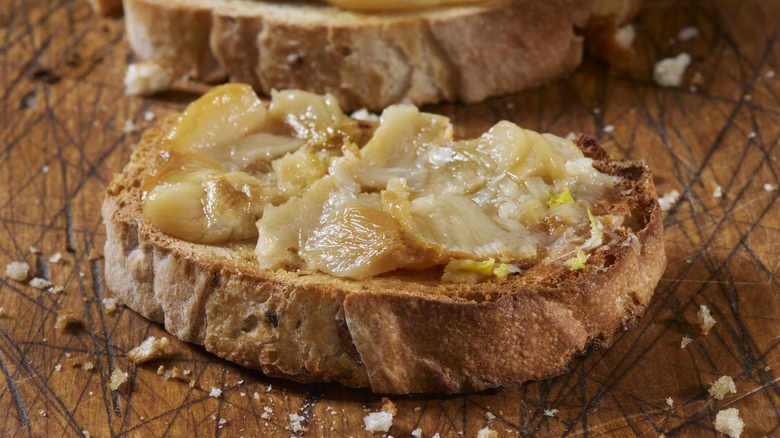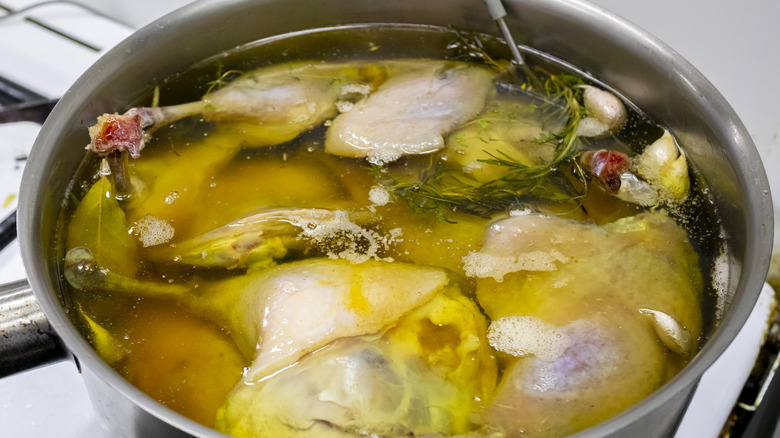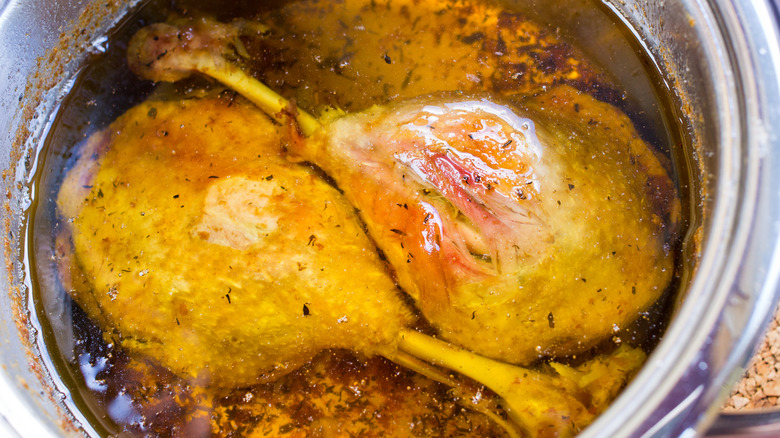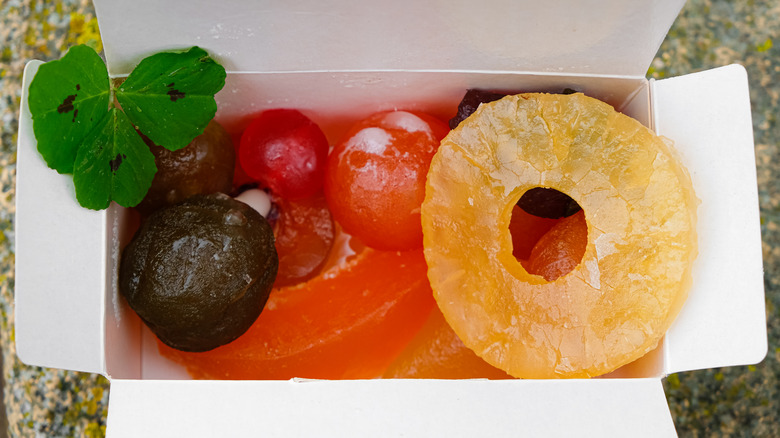What Does Confit Really Mean?
Le confession: We're not above trying to sound fancy with our sub-par French. "Voulez-vous ...um ...pâtisserie? Oui Oui?" But confit is a classic cooking term we can definitely wrap our heads around. And we're here to spread the official word on our favorite way to eat fat. (Well, one of them. Top 10 for sure. OK, there are too many to count.)
You've probably seen duck confit on the menu of any classic French restaurant worth its salt. Maybe you've even tasted it, served with toasty roasted potatoes, French green lentils, or a fresh pea purée. It's a centuries-old dish, full of deeply rich flavors — and succulent meat that's so decadent that you won't be able to remember how long ago you left your body and floated off to Pleasure Town.
From the very old roots of Team Confit, to how many months(!) confit lasts in the fridge, to how you can confit your next dippy egg on toast (you better believe you can), here's what the confit method really involves — and how you can get your hands on the best confit around.
Confit is the French way to preserve with fat
"Je m'appelle confit!" It's pronounced kon-FEE. It's a French term for the low-n-slow cooking and storing of food in fat, and it's also very fun to say. (Try it. Also someone please invent coffee cooked in fat so we can order a kah-FAY kon-FEE.) It has also morphed into the term for the actual meat that has been cooked in this way. And it all leads to that first bite of duck melting in your mouth like a velvety pat of disappearing butter.
The confit trend (the longest trend ever, because it's extraordinarily old) started back when 1400s-era French people needed a way to store their meat while their SMEG was on backorder for 500 years. Back then, it was totally normal to kill a bird, cover it in salt, and dunk it in some fat to (throat clear) ripen for months. The fat formed an air-tight seal around the meat, keeping bacteria out of the mix.
But pretty quickly, everyone realized how good those fat-cured gizzards really tasted (oh, life in the days before French fries) and the method hung on long after we didn't need to use it anymore to survive. These days, as Paris Hilton might say, we're "sliving" with confit dishes regularly appearing on the most sought-after menus.
The confit method of slow cooking in fat
How do you do it exactly? Real confit preparation requires time. So if you see a recipe that can be cooked in under an hour, that's not authentic confit. That's faux-fit and we're not doing that. The keyword here is "slow." And "fat." And also "delicious."
First, the meat typically gets patted dry, then massaged with a nice seasoned salt, wrapped tight, and aged in the fridge. The salt draws out the water in the protein, so what we're left with is the most beautifully tender meat on this side of the Atlantic. There is also curing salt made specifically for these purposes. It features sodium nitrate, which keeps the preserving environment bacteria-free until you're ready to move on to the next level: fat.
By the way, it might seem like people always go for duck fat for a confit. But actually, goose or chicken fat is also great for this. Oftentimes, home cooks will use olive oil, since it's easily available. And some even use bacon fat. (You know who you are). After that, it's all about the storage and cooking temperatures. People used to confit meat and save it for months (and it didn't go bad), but modern sensibilities can't wait that long. After the meat has aged in the fridge for a few days, it gets a leisurely cook in your fat of preference, at about 300°F for two to three hours. Confit accomplished.
The confit method is different than sous vide
We're all familiar with food going under the surface of a liquid to cook. Hello, you do have to boil the noodles for boxed mac and cheese. But when we're talking fancy-schmancy cooking methods, there's one that might seem suspiciously similar to confit: Sous vide (pronounced soo-VEED).
The sous vide process involves vacuum-sealing food and cooking it inside a bag, while it's all submerged in hot water. This French term literally means "under vacuum." While it's very "Iron Chef America," it's not the same thing as confit. Maybe there's a little oil or butter inside the vacuum-sealed bag, but the meat certainly isn't cooking in a jacuzzi of its own delicious fat.
There's also a difference in proteins. Confit usually involves poultry, but sous vide can work with just about anything (steak is a typical choice). Still, with food, anything is possible. There is, indeed, a recipe for sous vide duck confit. It results in almost instant duck confit, using just duck legs, a vacuum-sealed bag, and the duck's own fat. It's perfect if you find yourself with a cute duck and a wide-open afternoon.
Where to get the most famous dish: Duck confit
Duck confit (you'll also see it listed as confit de canard) is without doubt the most popular confit dish in the world. It's duck legs in duck fat and it's duckin' delicious. But what do you do if you don't want to render your own duck fat and spend several days cooking dinner? You make something easier: reservations.
Of course, you'll want to go to France to sample the authentic version of this dish, while steeped in its heritage. Luckily, the confit de canard situation has been buzzing for generations, with plenty of options from which to choose.
Paris mainstay Joséphine Chez Dumonet's version had one fan raving, "[It's] by far the best I have had to date...their duck confit and fries are worthy of every calorie." Au Pied de Fouet's take on the favorite evoked this review from a happy customer: "The duck was so tender and juicy, and the perfectly browned skin may have been one of the best things I have ever tasted." But don't write off the chance of an excellent dish at a stateside institution. One reviewer wrote of Balthazar New York's duck confit, "The duck is to die for, tender off the bone, and the sauce does not overwhelm the flavors." Table for two, please.
You can confit some surprising foods
Modern confit technique hasn't left duck legs in the dust, but it certainly has reinvented itself to include a bounty of tasty meats, roots, and veggies. It's like we collectively realized that everything tastes better with a little flavorful fat on it. Weird.
Enjoy salmon? You can confit it. Ever had carnitas — which involves cooking pork in lard? Then you had pork confit. Sweet tomato confit is totally a thing that goes back to the French and Italians preserving their crops in oil, back in the day. You can even confit an egg yolk if you want your next breakfast to go from sadness-cereal to ultra-luxurious egg-on-toast. Just remember that even though confit yolks look like perfect little orange balls, they are meant to be gently cracked and ooze out their insides. Handle with care.
But maybe the most multi-talented ingredient to hit the confit scene is garlic. After a slow cook in olive oil, garlic becomes tender, spreadable, rich, buttery, and even a little sweet. It's like a whole different person compared to raw garlic. Even better? You can put it on just about anything. Top a pizza, spread it on a sandwich, saute it with some veggies, you name it. (Did someone say put it on mashed potatoes? Already done).
Confit dishes only get better with time
We don't need to store our meat in barrels of fat to get through the winter anymore. But it turns out that the confit method still works wonders for preserving foods for long periods. Like, really long. Like 5 to 6 months long — for legit, tried and true duck confit. (Raise your hand if you would eat meat that's been in the fridge for more than five days. OK, hear us out, because one person's recipe lasted for over a year).
It's true that real duck confit develops more flavor and becomes richer as it rests for the month after it's cooked. But there's a little doing that needs to be done so that this magic duck can occur.
As chef and restaurateur Thomas Keller wrote in his "Bouchon" cookbook, "You can keep confit for months rather than weeks if you remove all meat juices from the fat." To do this, he explains that you take the duck meat out of the fat completely, then put the fat in the fridge to cool. Once the fat has solidified into a layer at the top of the container, remove it without touching the meaty gel underneath. Chuck the gel, warm the fat, and then douse the duck in the fat (once again) so it stays preserved in the fridge, for midnight snacks. Despite this miracle of medieval science, typical duck confit timelines lean mostly toward eating the dish all at once and having no leftovers — or keeping it for up to a month.
Confit is decadent, but also good for you-(ish)
OK, no one would ever gaze into a pot of duck fat and think they're in for a light lunch. But it turns out that just because something has been prepared as a confit doesn't mean it's all bad for you. In fact, duck fat can be good for your heart health. (Promise we haven't been compromised by a bunch of non-ducks who paid for this research).
Obviously, all fat has, well, fat and calories in it, so don't go to town on the loaded duck fat fries every day. But, in the world of fat, duck fat in particular features unsaturated fatty acids that can actually do good things for your heart. According to Healthline, duck fat can lessen your risk of heart disease and help maintain healthy blood sugar levels. With a saturated fat content of 28%, it clocks in at a lower percentage than trendy fats like pork lard and beef tallow which appear all over the modern restaurant scene.
Healthline also reported that the fatty acids in duck fat (linoleic acid and oleic acid) reveal a profile that's almost identical to that of Hass avocados and olive oil. We're clearly not doctors, but take two spoons of duck fat and call us in the morning.
Slay your dessert tray with sweet fruit confit
Confit: It's not just for medieval birds anymore. And if you're a dessert person, the sweet version was made for you. (Happily, there's no duck fat involved — just the succulent syrup of the gods).
Just as drool-worthy as its savory counterpart, fruit confit goes back to almost every ancient civilization. France, Italy, and ancient Egypt all lay claim to having popularized the practice of preserving their produce. Still, it's the Apt commune in southeastern France that just might be the top producer of candied fruit in modern times. But you don't have to import that sugar-bathed tutti frutti — you can make it yourself.
Serve up a classic pear confit with crème fraîche and hearty Bosc pears like they were always meant to be; tender, sweet, and richly spiced. Comforting mulling spice flavors of wine, clove, and cinnamon "pear" well (get it?) with a velvety, vanilla bean cream. (If you're inspired, don't hold back on a drizzle of caramel sauce). During warmer months, dollop a jammy strawberry confit over French toast, or zhuzh up a light cake with the sweetest take on summer fruit. Steal the show (yes, it will be fully stolen and you'll be wanted by the law) with a confit of citrus filled with a bright sorbet. Confit just the rind of anything from a grapefruit to a lemon, and thanks to this sweet and slow curing process, you'll be able to eat every last bit on your plate. A perfectly confit cherry on top is up to you.

